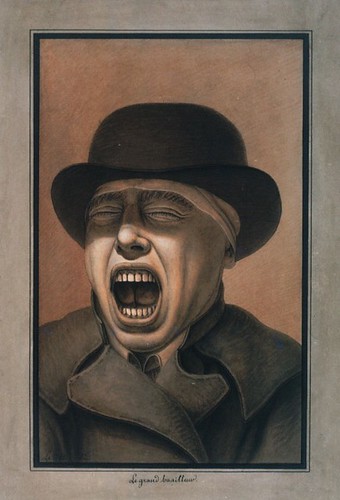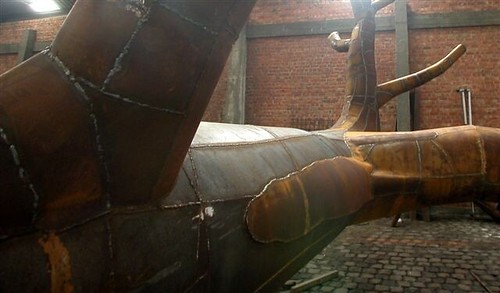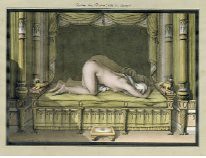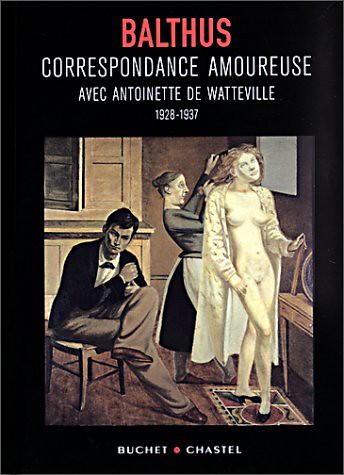
‘Le grand baailleur [sic],’ drawing by J-J Lequeu, from between
1777-1824 (Eng: the big yawner)
Jean-Jacques Lequeu (Rouen, September 14 1757 – 28 March 1826) was a French draughtsman and visionary architect. Today is his 250th anniversary.
Born in Rouen, he won a scholarship to go to Paris, but following the French revolution his architectural career never took off.
He spent time preparing the Architecture Civile, a book intended for publication, but which was never published. Most of his drawings can be found at the Bibliothèque nationale de France. Some of them are sexually explicit (Le Dieu Priape [1] (ca. 1779 – 1795) which shows a rather large male phallus and Trois images du sexe féminin) and are kept in the Enfer of the library. Most of these drawings have been reproduced in Duboy’s book but can also be found in Sade / Surreal.









